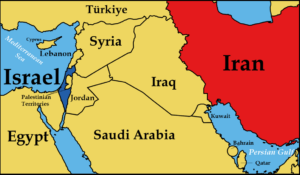Bashar al-Assad’s 24-year rule ended abruptly after 13 days of a coordinated rebel offensive. With his departure, Syria embarks on a new, uncertain chapter, marked by the dominance of extremist Islamist entities such as Hayat Tahrir al-Sham (HTS). While the immediate relief of ending a 13-year-long civil war is palpable, the implications of this dramatic regime change raise critical questions about Syria’s future and the broader regional stability.
The final blow began when Syrian rebels seized Hama, a strategic city 200 kilometers from the capital. Swiftly, they advanced toward Homs, a vital gateway to Damascus. Assad’s forces offered minimal resistance, and many surrendered. In Homs, victorious rebels celebrated by toppling statues and destroying portraits of Assad and his family, signaling the end of an era.
By Saturday, the situation had reached a tipping point. Homs was under full rebel control, and Damascus was encircled. Abu Muhammad al-Jolani, leader of the Islamist group HTS, declared their advance unstoppable. Residents of Damascus, already resentful of Assad’s rule, showed little inclination to resist. With his forces crumbling, Assad fled to Russia on Saturday night. By Sunday morning, the rebels had seized state television, officially declaring Damascus had fallen.
The rebels urged the Prime Minister to maintain a caretaker role until a transition plan is devised. Their immediate focus is on stabilizing Damascus and surrounding areas.
Rebels wasted no time dismantling symbols of Assad’s regime. The presidential palace was destroyed, and Assad’s luxurious car collection—an emblem of excess amid widespread poverty—was confiscated. Notorious prisons like Sednaya were stormed, leading to the release of thousands of detainees.
For the majority of Syrians, the collapse of Assad’s government brought relief. Years of repression, economic hardship, and displacement had pushed 70% of the population into poverty and left 30% displaced.

Global leaders reacted swiftly. President Joe Biden hailed Assad’s ouster as “a fundamental act of justice,” while European nations and Turkey welcomed the change. President Erdoğan of Turkey called the development a “new political reality” and pledged support for rebuilding Syria.
While Assad’s fall signals hope, the challenges for Syria remain immense:
- Rebel Cohesion: The rebel alliance is diverse, comprising various tribes, sects, and ideologies. Maintaining unity during the transition will be crucial to avoid internal strife.
- Kurdish Relations: Kurdish forces controlling northeastern Syria have a tenuous relationship with Islamist rebels. Their role in the country’s future is uncertain, and exclusion could spark further conflict.
- Regime Nature: HTS, led by al-Jolani, faces scrutiny. While al-Jolani promises inclusivity, his past ties to extremist groups raise concerns about the direction of governance under Islamist leadership.
The fall of Bashar al-Assad signifies the end of an era in Syria but also marks the beginning of an uncertain and potentially volatile chapter. While the ouster offers hope for a brighter future, the dominance of Islamist factions and the governance challenges cast a shadow on the path ahead.
Syria is at a crossroads. Whether it descends into further conflict or rises as a beacon of resilience will depend on the unity of its leaders, the inclusivity of its governance, and the support of the international community. For now, the world watches closely, hoping that Syria avoids the tragic fates of its neighbors and charts a course toward peace and stability.
